Cats and dogs cannot breed because they are two completely different species.
Their chromosomes do not match; cats have 19 pairs of chromosomes while dogs have 39 pairs of chromosomes.
This means it is impossible for them to breed.
Contents
Cat x Dog = Mismatch
People love cats, people love dogs and sometimes people like to think about what would happen if two of their favourite things became one.
It can be easy to forget the differences between cats and dogs when they live in the comfort of your home.
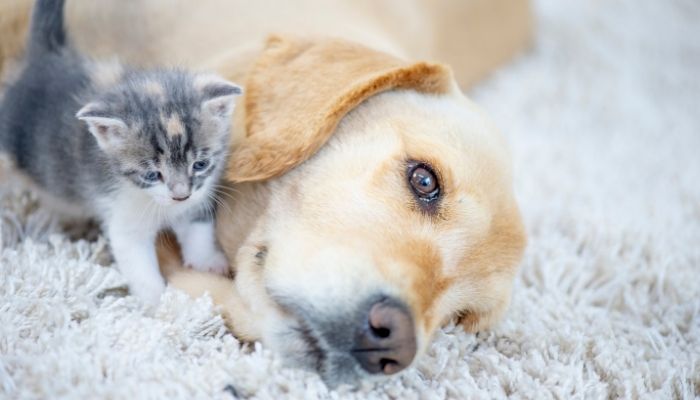
Would a litter of kitten/ puppies (what would we call them… kuppies or pittens or maybe even puppens?) anyway, would they be as cute as you think?
The simple daydream of it may be harmless but countless issues arise as soon as you begin to think more practically on the subject.
To be honest, it doesn’t matter what a cat/dog mix would be like as it’s never going to happen.
A mix between a cat and a dog is something that is left for cartoons and fictional stories.
Are They Really THAT Different?
After all, they both like sleeping on the sofa, eating meat and getting neck scratches.
This may be true but a dog and a cat are nowhere near each other in terms of genetics and this means they cannot be bred with each other.
You only need to look at a dog and a cat next to each other to see how different they are.
They differ in their size and appearance, their behaviour, their instincts and their reproductive features.
Aside from being popular pets, there isn’t much that connects them.
They are so different that they are actually incompatible.
This means pregnancy is not possible.
Dogs and Cats Are Incompatible
Let’s start off with the basics of genetics.
Chromosomes are DNA molecules with the genetic material of an organism, they are passed from parent to offspring.
The chromosomes contain specific instructions that make each type of living creature unique.
What does this mean for dogs and cats?
Well, cats have 19 pairs of chromosomes while dogs have 39 pairs of chromosomes.
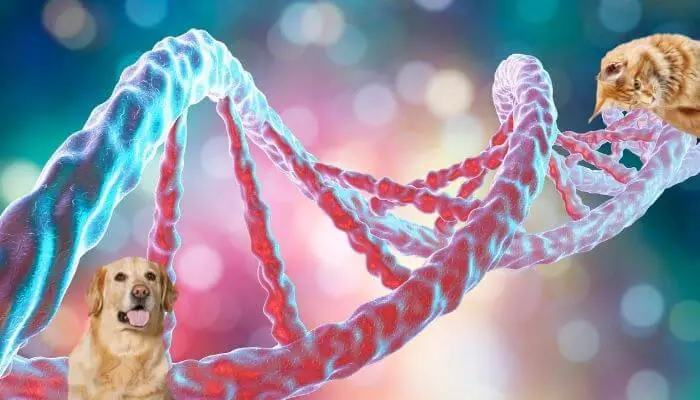
This (considerable) mismatch means that reproduction between the two is not possible, even if mating was to occur.
As the chromosomes don’t match up, the egg and the sperm wouldn’t be able to find each other and combine.
Can Different Species Breed?
It is ultimately the chromosomes that stop different species from breeding with each other successfully.
You may be thinking about news stories you’ve read about different species breeding and creating offspring together, a good example is a hinny (the offspring of a horse and a donkey).
So how is this different from a dog and a cat?
In the scenario of the horse and the donkey, the two species are genetically similar.
A donkey has 62 chromosomes while a horse has 64.
While not exactly the same, they are similar which is why breeding can lead to offspring.
However, the offspring created by a horse and a donkey has only 63 chromosomes meaning the offspring would be infertile and unable to reproduce.
Think of this as nature’s way of stopping breeding across species.
Even if the cat and dog situation was different with regard to the number of chromosomes and the sperm and egg were able to find each other the story would stop there.
The chances are the embryo would be naturally terminated before it is born due to the numerous compatibility issues between dogs and cats.
Did you know?
One of the ways scientists determine if animals are from the same species is if they breed together and produce fertile offspring.
This is because animals from different species won’t be able to breed together successfully.
Other Considerations
A dog and a cat would not be attracted to each other as they would be attracted to the opposite sex of their same species.
Let’s face it, dogs and cats tend to avoid each other, they can be friends when they are raised together or introduced to each other properly but more than that? Absolutely not.
As we mentioned earlier, there are some barriers in nature that stop breeding between different species.
This is natural selection.
Going against the rules of nature would cause an imbalance and would bring a tidal wave of other problems (health issues, diseases etc.).
Different breeds of cat can interbreed and different breeds of dog can interbreed but there is no interbreeding between dogs and cats.
If despite everything we have discussed so far, by some miracle a dog and a cat did breed and produce offspring, the offspring would be sterile as a result of the mismatched genes.
This means it is a dead end.
Reproductive Barriers
In addition to all of this, there are also a number of reproductive barriers that would get in the way too.
Here are just a few to give you an idea of what we are talking about:
- Geographical separation – in nature cats and dogs wouldn’t be found together. They would be living in completely different environments, would not be attracted to or interested in each other and therefore would not meet and breed.
- They have different rituals – for example, cats mate for between 30 seconds – 5 minutes and mating occurs 6-7 times for up to 4 days. Dogs mate and then experience “the tie” for 5 – 60 minutes and mating occurs twice. The physical dynamics of breeding the two would not work and if you tried to create a cat/ dog mix in a laboratory instead then it comes back to the issue of genetics.
- Different reproductive environment – successful breeding is hard enough between two members of the same species. The differences in the reproductive environment is another factor that makes it unlikely that the sperm and egg would successfully come together if mating did occur.
A Closer Look At Scientific Classification
We’ve talked a lot about the genetics of this situation but one of the easiest ways to explain the genetic differences between dogs and cats is to compare their scientific classification.
As you can see below, dogs and cats share 4 of the 7 levels of the classification system.
From the class “Family” onwards the domestic dog and domestic cat go in separate biological directions.
The dog in the family of Canidae and the cat in the Felidae family.
| Scientific Classification | Domestic Dog | Domestic Cat |
| Kingdom | Animalia (animal) | Animalia (animal) |
| Phylum | Chordata (vertebrate) | Chordata (vertebrate) |
| Class | Mammalia (mammal) | Mammalia (mammal) |
| Order | Carnivora (carnivore) | Carnivora (carnivore) |
| Family | Canidae | Felidae |
| Genus | Canis | Felis |
| Species | Canis lupus | Felinae |
| Subspecies | Canis lupus familiaris or Canis familiaris | Felis Catus |
They are both mammals and carnivores but that is where the similarities end.
This is why domestic cats can breed with small wild cats and why domestic dogs can breed with coyotes but the cat x dog mix only exists in cartoons.
In reality, they are genetically too far apart and you’d have to go back 5 scientific classifications in order to find a link.
Summary
We hope this has helped clear up any confusion about whether a cat and a dog can breed.
It may be a cute idea or a funny thing to think about but there are multiple reasons why this combination wouldn’t occur in real life.
Whether you want to look at it from a physical or logistical point of view, an attraction point of view, a genetic point of view, pretty much every way you look at it gives you a reason as to why it wouldn’t work. It’s for the best, really.
Bringing together two completely different species would end badly.
Dogs and cats have shared homes for a while now and they haven’t bred with each other.
There is a good reason for this.
Sometimes stories come out that claim a dog and a cat have produced offspring but hopefully, this article helps you realise that such stories are inaccurate and have much simpler explanations.

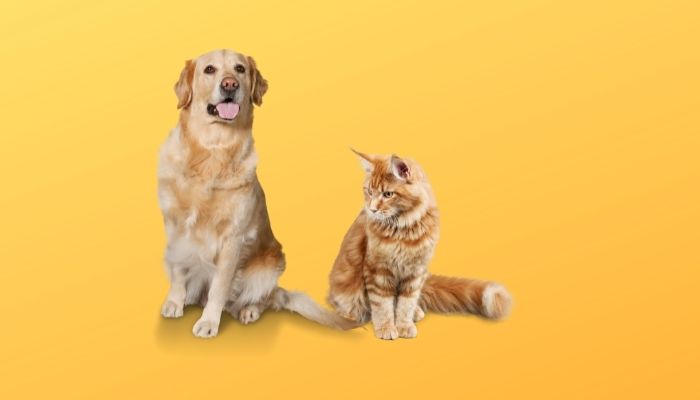
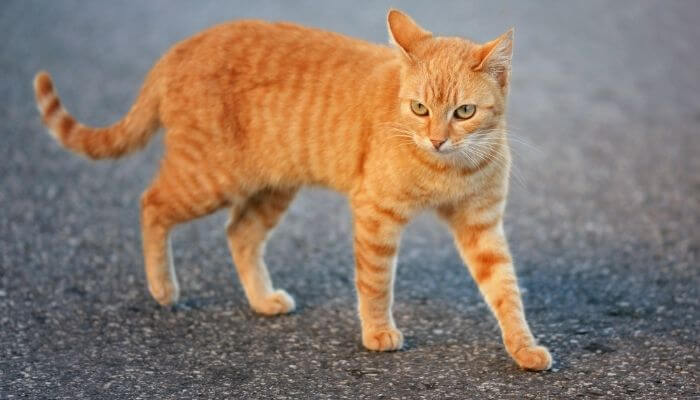


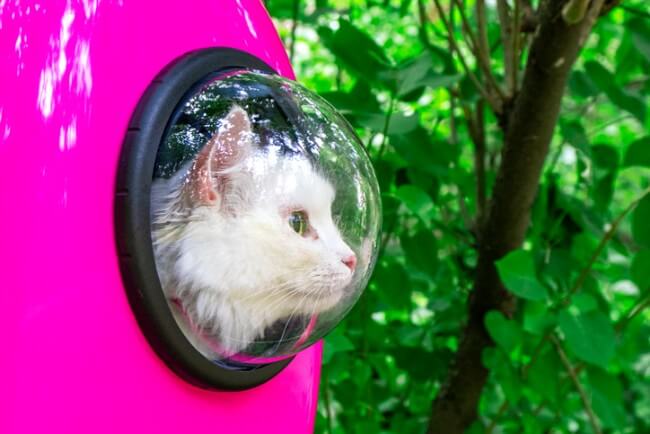
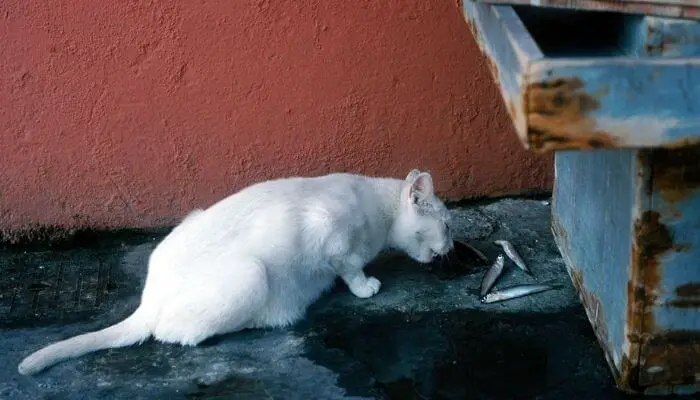

Leave a Comment